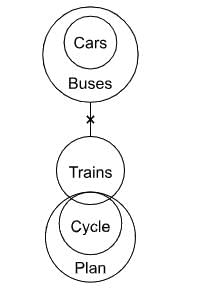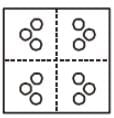NVS Lab Attendant Mock Test - 7 - NVS TGT/PGT MCQ
30 Questions MCQ Test - NVS Lab Attendant Mock Test - 7
'Horse' is related to 'Hoof' in the same way as 'Eagle' is related to:
Directions: Each of the following consists of a question and two statements numbered I and II given below it. You have to decide whether the data provided in the statements are sufficient to answer the question.
Which statement is required to derive the conclusion – ‘Some cycles are not cars’?
Statement I: All cars are buses. No bus is a train.
Statement II: Some trains are cycles. All cycles are plans.
Statement I: All cars are buses. No bus is a train.
Statement II: Some trains are cycles. All cycles are plans.
If a Paper (Transparent Sheet ) is folded in a manner and a design or pattern is drawn. When unfolded this paper appears as given below in the answer figure. Choose the correct answer figure given below.
Find out from the four alternatives as how the pattern would appear when the transparent sheet is folded at the dotted line.
Question Figure
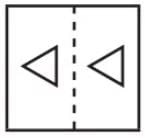
Answer Figure
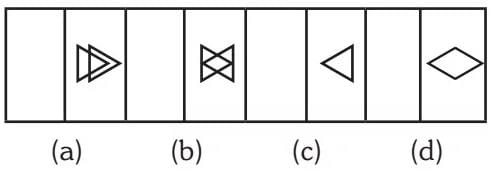
Find out from the four alternatives as how the pattern would appear when the transparent sheet is folded at the dotted line.
Question Figure


Direction: If a Paper (Transparent Sheet) is folded in a manner and a design or pattern is drawn. When unfolded this paper appears as given below in the answer figure. Choose the correct answer figure given below.
A piece of paper is folded and cut as shown below in the question figure. From the given answer figure, indicate how it will appear when opened.
Question Figure

Answer figure
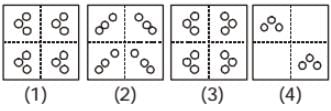
Direction: Study the following question carefully and choose the right answer.
If RAM is coded as 5, GUI is coded as 1, then what is the code for SAP?
Who is the newly elected Chief Minister of Madhya Pradesh?
Which organization is set to launch ESA's Solar Study Mission Proba-3?
Directions: In each of the following questions, a sentence has been given in Active (or Passive) Voice. Out of the four alternatives suggested, select the one that best expresses the same sentence in Passive/ Active Voice.
You should not offer meat to vegetarians.
No one suspected that Jerry was a spy. On the surface he behaved like any normal citizen. When his covert activity was discovered and announced to the world, we were all shocked. What does "covert" means?
The custom or practice of having more than one husband at same time
दिए गए वाक्य का काल ज्ञात कीजिए।
आधुनिक युग की मीरा महादेवी वर्मा ने 'मेरा परिवार' नामक संस्मरण लिखा।
The strength of magnetic field inside a long current carrying straight solenoid is
Figure shows a ray of light as it travels from medium A to medium B. Refractive index of the medium B relative to medium A is
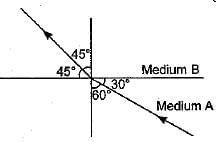
Which of the following does not undergo sublimation?
At room temperature, a non-metal which is liquid is
Why do isotopes have different physical properties?
X – rays, light rays are electromagnetic waves is a
______ is the concentration of a toxin at successively higher levels in a food chain.
The human eye forms the image of an object at its
Which of the following methods would you use to separate cream from milk?
For an object to have gravitational potential energy only, it must be


